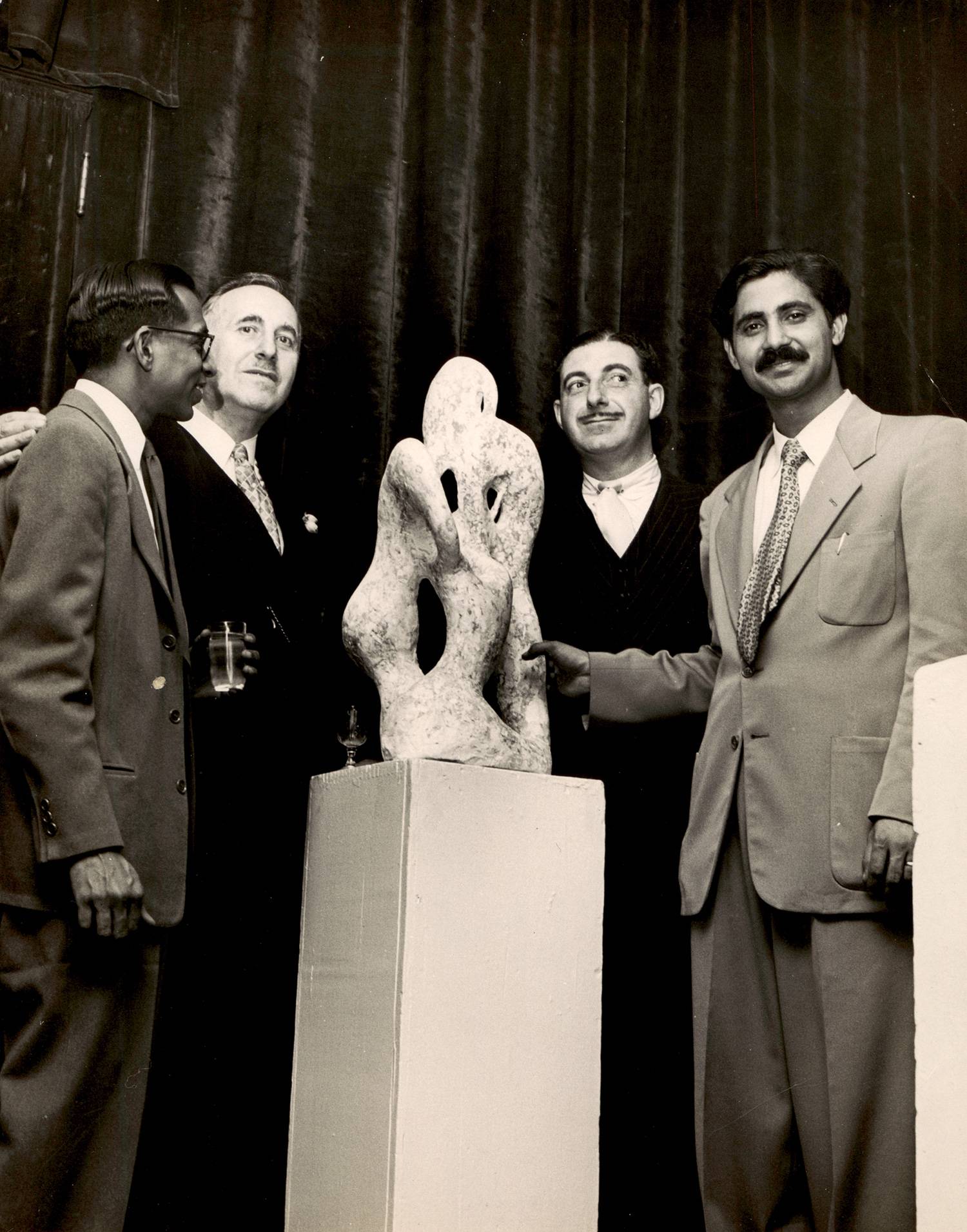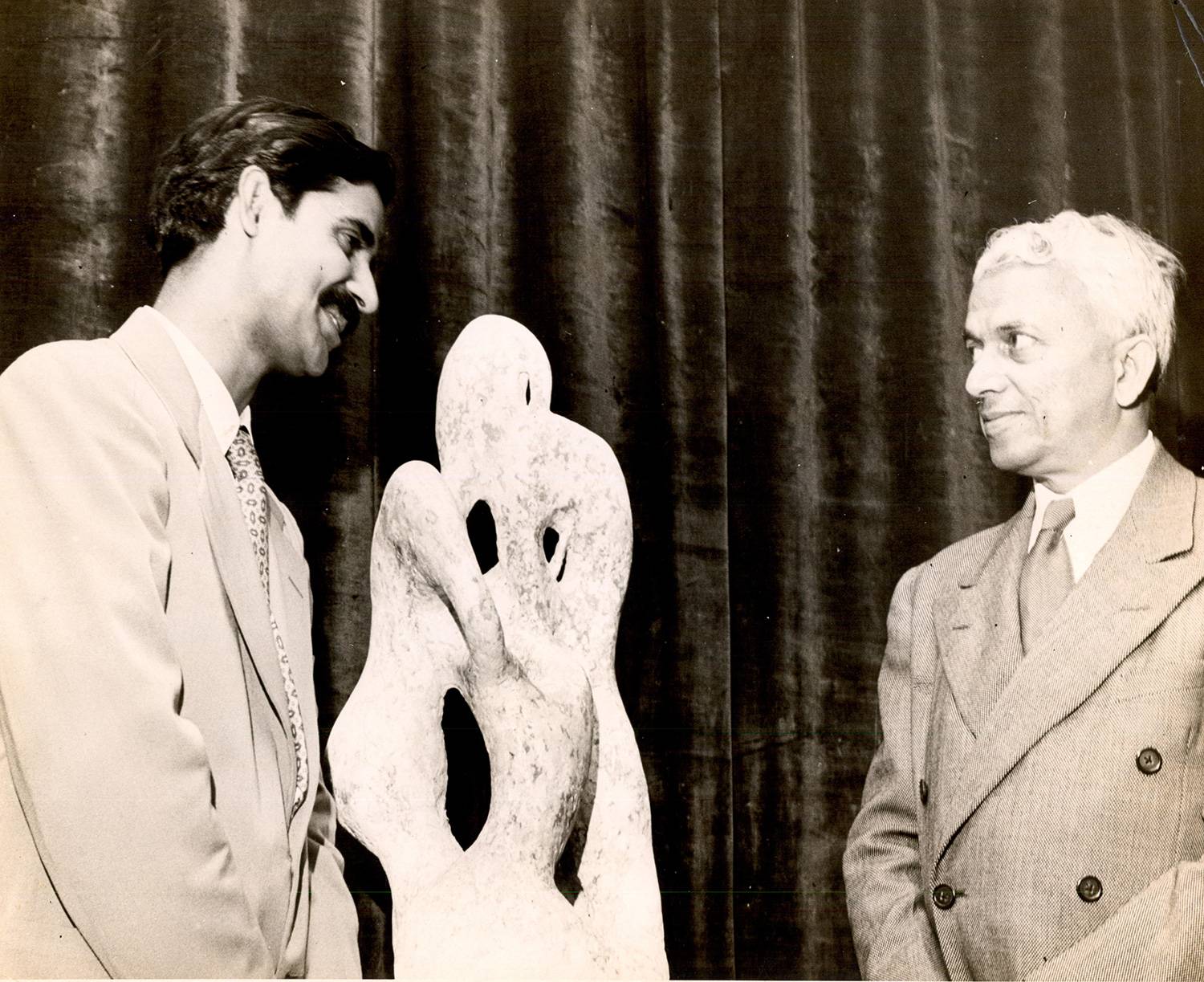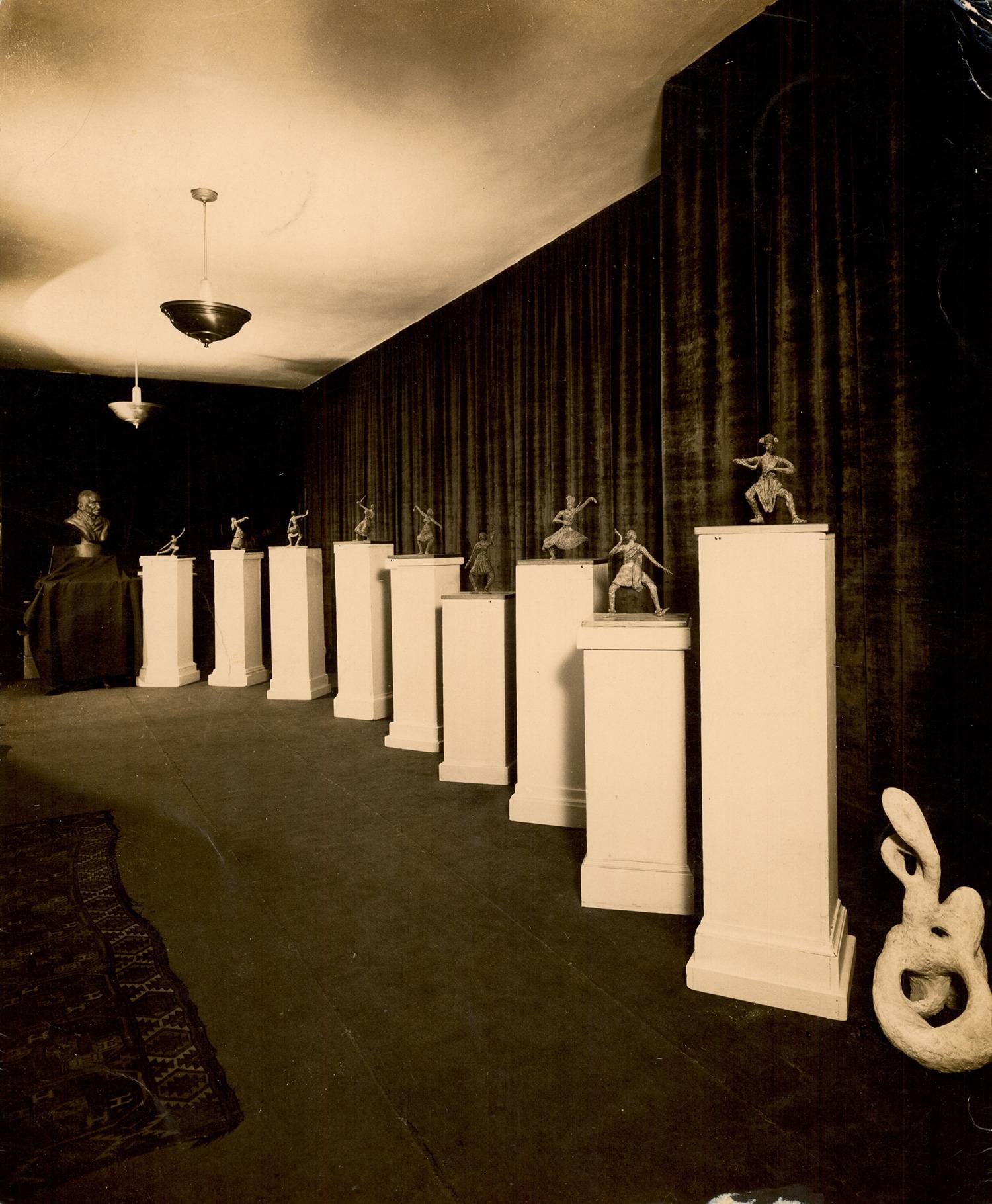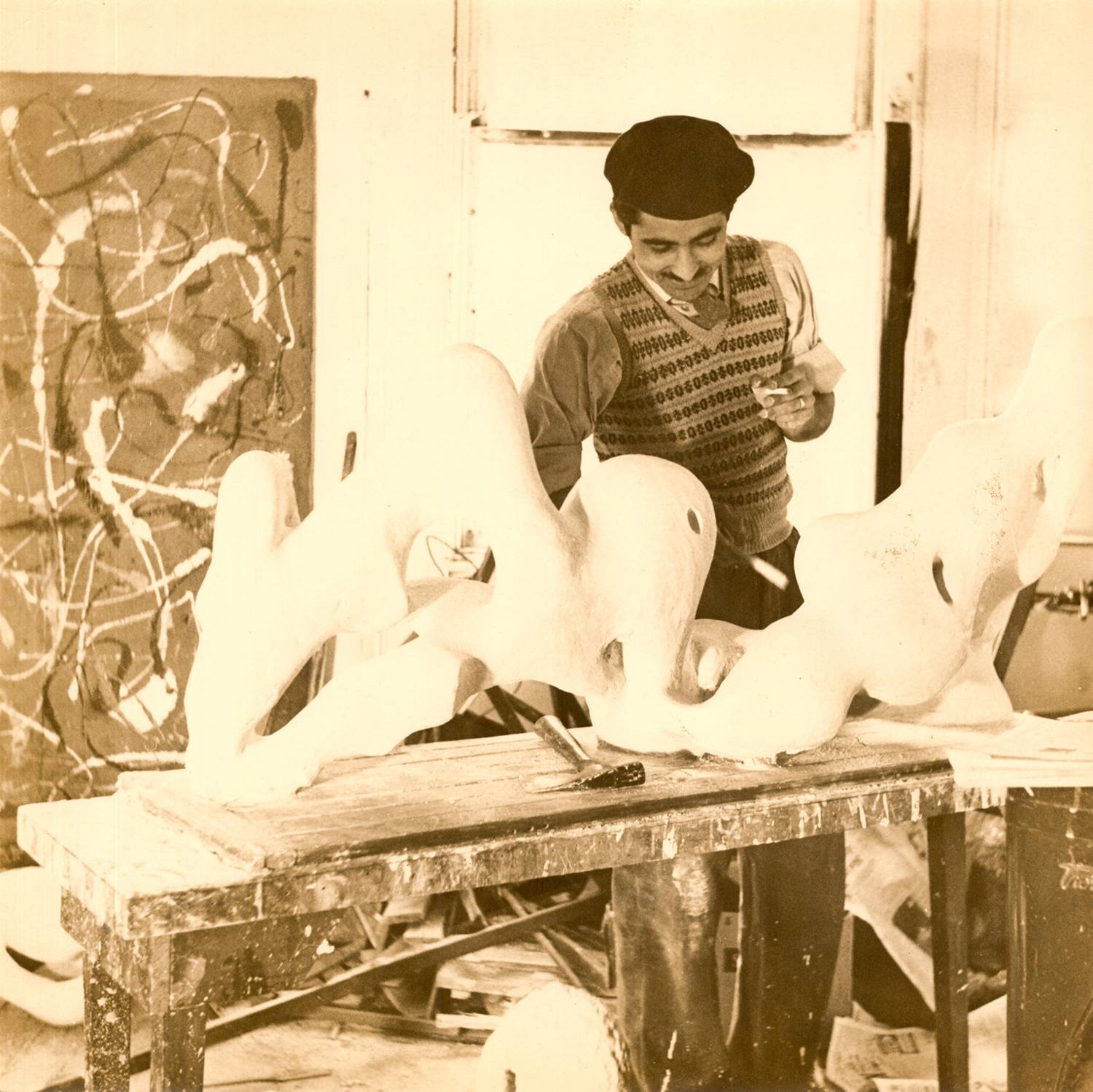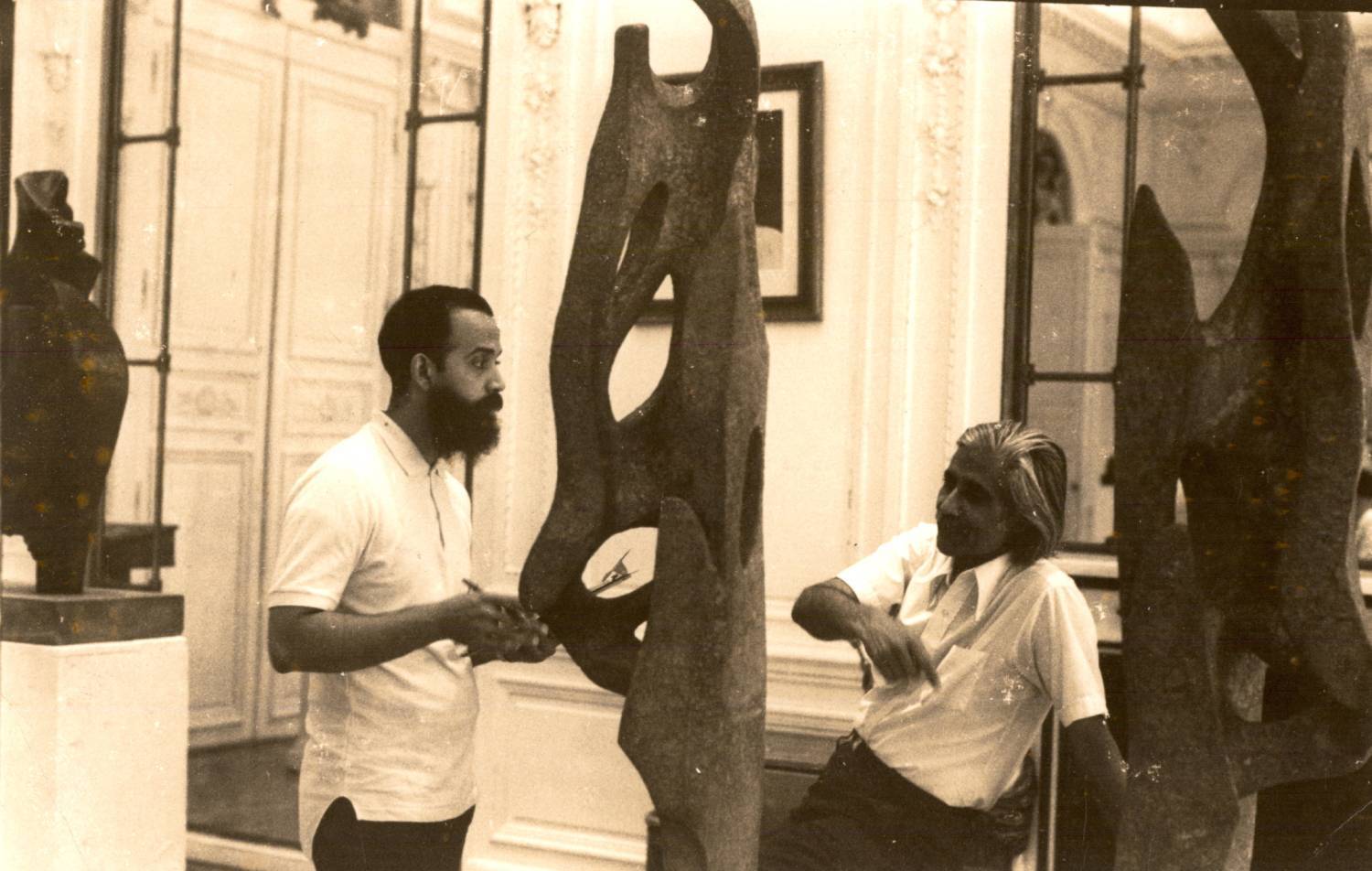1949
An American Education
The aftermath of the Indian Partition would still be in a state of despair. It was early 1948 when he applied for a scholarship to New York University. He wrote in his memoir titled An American Education: ‘My nerves were shattered having witnessed the Holocaust, with millions killed and many more millions uprooted from their ancestral hearths and homes, on both sides of borders to seek refuge, solace, security and peace, keeping their bodies and souls together.’
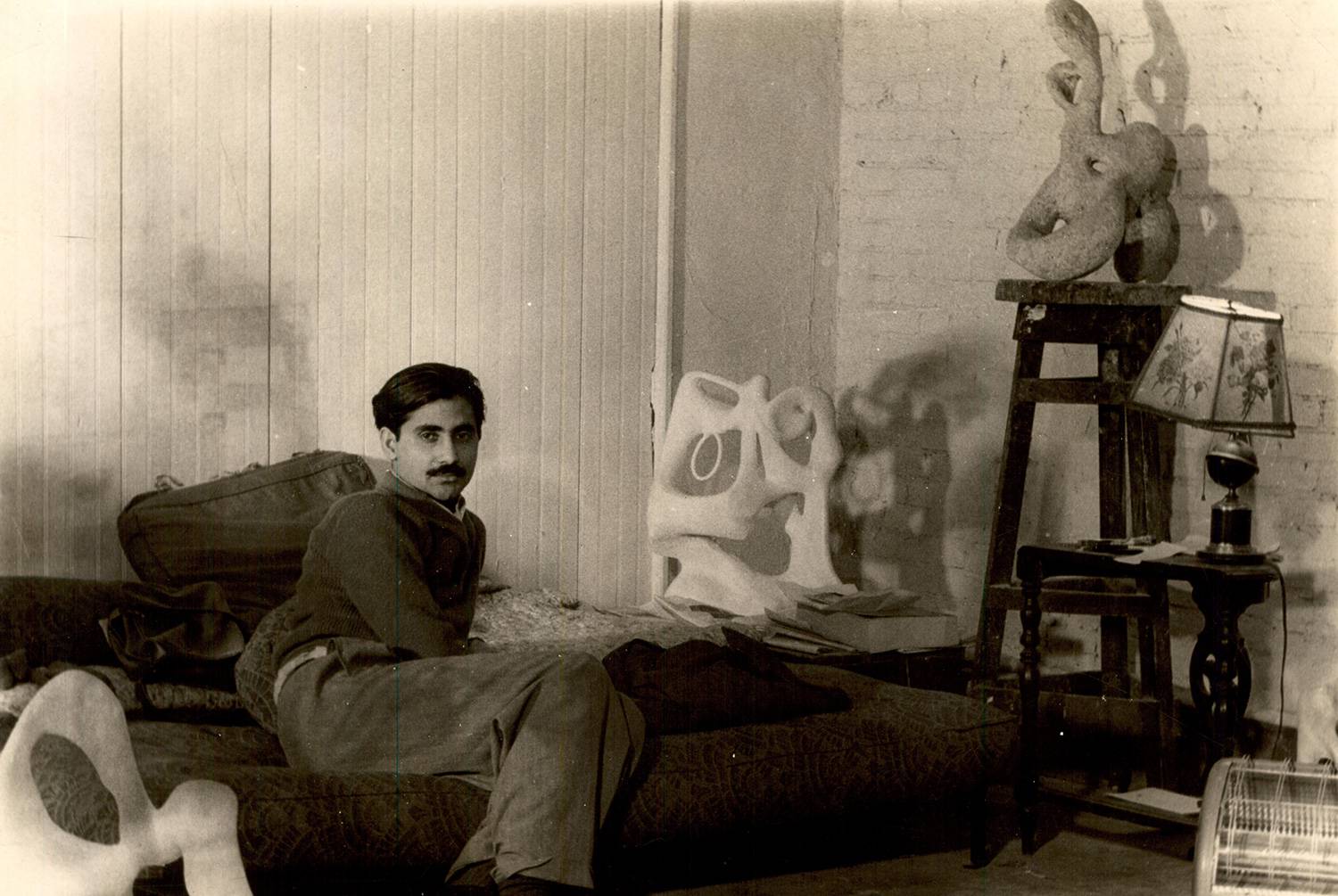
Meanwhile a lack of funds, an unstable insomniac state from the haunting of the Partition, and the detachment from his family all made him feel lonely. In spite of working several odd jobs to make ends meet, his creativity soared and the more time he spent with himself, the more he experimented with new forms of expression. He painted Christmas dolls, worked as a waiter and lectured at the museum. Some of his professors offered him their studio space on 8th Street close to Washington Square Park to work in instead of attend classes, encouraging advancements in his art. Professor and artist Tony Smith became a particularly strong influence and a good friend. He helped Sehgal discover his deeper self through his sculptures.
In 1950, Sehgal had a solo show at the Public Library in New Rochelle. The next year, at the young age of twenty-seven, he had his first show at the Arthur Newton Galleries in New York. Sculpture by Amar Nath Sehgal, 1951, was well received. After his solo show in 1952, The New Yorker called him ‘the talk of the town’.
During this time he was also working around artists like Jackson Pollock, Mark Rothko and Barnett Newman, popularly known as radical artists, who all encouraged his talent. Pollock’s love for paint and unique techniques opened up Sehgal’s views on public art. Overall, Sehgal was always appreciative of the opportunities America lent him. His time in New York was challenging. In 1950, he established his own studio, an unheated apartment with a tiny fireplace, at 543 East 6th Street. In the winter of 1951 his studio caught fire and was no longer habitable. With no home, he lived with friends who also collected donations for him to start afresh.


Sehgal wrote, ‘It is through this interaction with a new culture that I formed new values – built a character fortified with strength and determination to conduct my life. I launched to develop my career back home, sought a humble job and moved slowly towards the goal I set for myself. There were impediments in the process but I managed to surmount them, charged with my own zest and zeal.’
In a favourable turn of events, he met Pandit Jawaharlal Nehru while in New York. What we know now as Nehru’s dream to build a nation from the ground up, he collected Indian origin scientists, mathematicians, economists, and a few artists like precious gems. During his travels abroad, Nehru was keen to meet and address young Indians, sharing his dream of a new nation at the brink of glory, the largest democracy in the world with a rich culture to protect. These meetings mark another milestone in Sehgal’s career, when he obtained the then prime minister as a patron.


